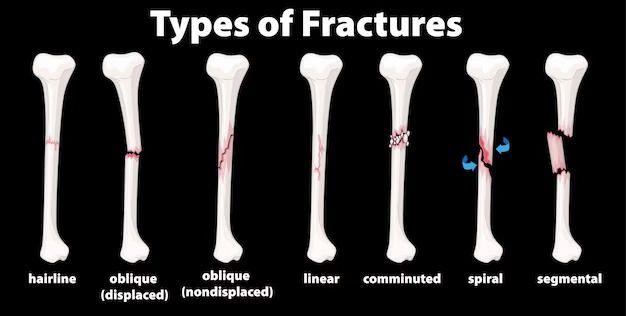Our bones are living tissues that constantly perform regeneration to survive. When the formation of new bones isn’t as fast as the deterioration of old bones, we face osteoporosis.
Vulnerable Groups
While anybody can get osteoporosis, there are a few groups more vulnerable to the disease. For example,
- Non-Hispanic white women and Asian women who have completed menopause.
- People with low sex hormones (estrogen or testosterone) or high thyroid hormone levels.
- People who have small body frames and lesser bone mass.
- Aged people.
- People who’re underweight or have a calcium deficiency.
- People who have the disease running in family history.
Fractures
Osteoporosis causes our bones to become weak and brittle. So weak that even a blow or a fall can cause you a fracture. It is a silent disease, whose presence you only realise after you’ve already got a fracture.
Fractures of the spine, hip, or wrist are the most common types in people with osteoporosis. However, the spine or hip fractures are the most serious complications of osteoporosis since hip fractures often are caused by a fall and can result in disability and the spine is an essential part of our nervous systems.
-
- Low Trauma or Fragility Fractures: The low intensity falls or injuries that might not hurt a healthy bone but fracture a bone affected by osteoporosis. These are called low trauma or fragility fractures. Sometimes these fractures heal on their own by conservative treatment but other times you need to contact an orthopaedic surgeon. Following surgery, a physiotherapist will help train your nerves, muscles and bones post-fracture and shows exercises to get back on with your regular life.
- Spine Fractures: Since they are relatively more critical, patients with spine fractures typically receive pain medication, exercises, and a back brace or treatment for muscle spasms while they heal. While most spine fractures heal by this, more severe cases need vertebroplasty or kyphoplasty.
Under vertebroplasty, your doctor injects bone cement into your spine to stabilise it and lessen the pain. Additionally, it can prevent further fractures of the vertebrae and curvature of the spine.
Under kyphoplasty, your doctor inserts a balloon device into the fractured vertebra to help restore the height and shape of the vertebra. The device leaves a small cavity. The doctor then fills the cavity with special bone cement. - Hip Fractures: Hip fractures are a break in the upper portion of the femur. They are highly painful and often too critical to have their surgical treatment delayed. X-rays, MRI scans or CT scans diagnose these fractures followed by treatments including surgical repair with screws, nails, or plates; a partial or total hip replacement and lastly, exercises.
- Wrist Fractures: Wrist fractures are healed simply by adding a cast or splint.
Prevention is better than cure. If you’re diagnosed with osteoporosis, it’s a good idea to strengthen your bone health, change your lifestyle to prevent injuring your bones and have your eyesight checked so you don’t fall by mistake!








0 comments on “Osteoporosis and its relation to Bone Fractures”